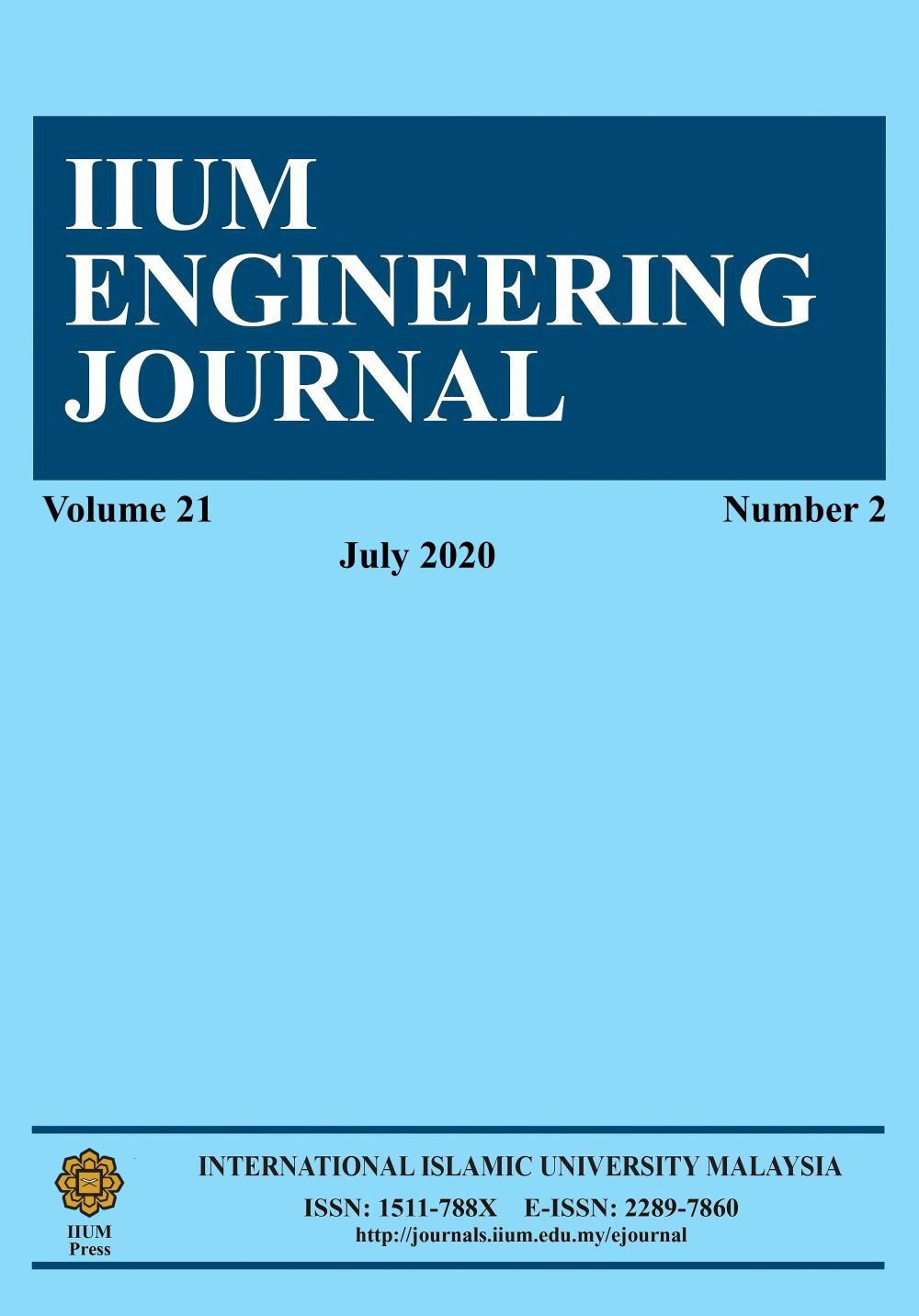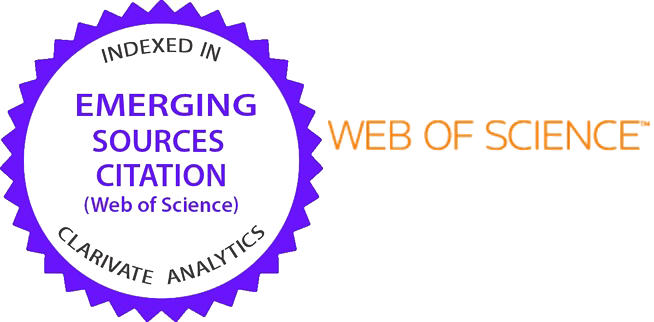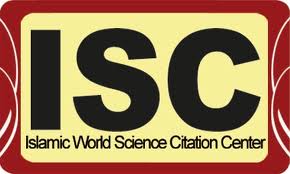STATISTICAL ANALYSIS OF GROWTH CONDITIONS OF NEWLY ISOLATE BACILLUS SP. PRODUCING L-ASPARAGINASE
DOI:
https://doi.org/10.31436/iiumej.v21i2.1351Keywords:
Bacillus sp., L-asparaginase activity, screening, peptone, temperatureAbstract
The concentrations of nutrient elements together with several physical parameters were screened to find out the significant factors for the production of L-asparaginase from newly isolated strain, Bacillus sp. from Sg Klah, Hot Spring, Perak. Then, the significant factors were optimized for enhancing L-asparaginase production from the bacterium strain. Two statistical designs, Two Level Factorial Design and Face Centered Composite Design (FCCD), Design expert @version 8.0 were employed in screening and optimization of the process variables, respectively. The results for all experiment runs were analyzed by analysis of variance (ANOVA). Peptone (nitrogen source) concentration and temperature were found as significant factors, positively influenced the production of L-asparaginase. The two factors were then optimized to increase the desired enzyme production. The optimum peptone concentration and the temperature were found at 1.4 g/L and 30ºC, respectively. The L-asparaginase production under optimized conditions increased from 0.15±0.023 U/mL to 0.19 ± 0.03 U/mL. The kinetic studies showed that the biomass production dropped after 24 hours while L-asparaginase activity is active and positively increased until the fermentation period ended.
ABSTRAK: Kepekatan unsur-unsur nutrien bersama-sama dengan beberapa parameter fizikal telah diteliti untuk mengetahui faktor-faktor penting untuk pengeluaran L-asparaginase dari spesis baru diasingkan, bacillus sp. dari kolam air panas tempatan. Kemudian, faktor penting dioptimumkan untuk meningkatkan pengeluaran L-asparaginase daripada bakteria tersebut. Two Level Factorial Design dan Face Centered Composite Design (FCCD), Design expert @version 8.0 telah digunakan dalam penyaringan dan pengoptimuman pembolehubah proses dalam kajian ini. Keputusan untuk semua eksperimen dianalisis dengan analisis varians (ANOVA). Kepekatan dan suhu peptone (sumber nitrogen) didapati sebagai faktor penting, secara positif mempengaruhi pengeluaran L-asparaginase. Kedua-dua faktor ini dioptimumkan untuk meningkatkan pengeluaran enzim yang dikehendaki. Kepekatan peptone dan suhu optimum didapati masing-masing pada 1.4 g / L dan 30ºC. Pengeluaran L-asparaginase di bawah keadaan yang dioptimumkan meningkat dari 0.15 ± 0.023 U / mL kepada 0.19 ± 0.03 U/mL. Kajian kinetik menunjukkan bahawa pengeluaran biojisim menurun selepas 24 jam manakala aktiviti L-asparaginase aktif dan meningkat secara positif sehingga tempoh penapaian berakhir.
Downloads
Metrics
References
Cachumba JJM, Antunes FAF, Peres GFD, Brumano LP, Santos JCD, Silva SSD. (2016) Curent applications and different approaches for microbial L-asparaginase production. Brazilian J Microbiol, 47S:77–85. https://doi.org/http?//dx.doi.org/10.1016/j.bjm.2016.10.004
Kumar NSM, Shimray CA, Indrani D. (2014) Reduction of Acrylamide Formation in Sweet Bread with L -Asparaginase Treatment. Food Bioprocess Technol, 7:741–748. https://doi.org/10.1007/s11947-013-1108-6
Amena S., Vishalakshi N., Prabhakar M., Dayanand A. LK. (2010) Production, purification and characterization of l-asparaginase from treptomyces gulbargensis. Brazilian J Mocrpbiology, 41:173–178. https://doi.org/doi 10.1590/S1517-838220100001000025
Verma N, Kumar K, Kaur G, Anand S. (2007) L-asparaginase: A promising chemotherapeutic agent. Crit Rev Biotechnol, 27:45–62. https://doi.org/doi:10.1080/07388550601173926
Jha, S K, PAsrija D., Sinha RK, Singh HR, Nigam VK VAS. (2012) Microbial L-asparaginase: A review on current scenario and future prospects. Int J Pharm Sci Res, 3:3076–3090. https://doi.org/http://dx.doi.org/10.13040/IJPSR.0975-8232.3(9).3076-90
Zuo S, Zhang T, Jiang B, Mu W. (2014) Recent research progress on microbial l-asparaginases. Appl Microbiol Biotechnol, 99:1069–1079. https://doi.org/10.1007/s00253-014-6271-9
Pieters R, Hunger SP, Boos J, Rizzari C, Silverman L, Baruchel A, Goekbuget N, Schrappe M, Pui C. (2011) L-Asparaginase Treatment in Acute Lymphoblastic Leukemia. Cancer, 117:238–249 . https://doi.org/10.1002/cncr.25489
Jha SK, Pasrija D., Sinha RK, Singh HR, Nigam VK, Vidyarthi AS. (2012) Microbial L-asparaginse: A review on current scenario and future prospects. Int J Pharm Sci Res, 3:3076–3090
Jain R, Zaidi KU, Verma Y, Saxena P. (2012) L-Asparaginase?: A Promising Enzyme for Treatment of Acute Lymphoblastic Leukiemia. People’s J Sci Res, 5:29–35
Prakasham RS, Hymavathi M, Rao CS. (2010) Evaluation of Antineoplastic Activity of Extracellular Asparaginase Produced by Isolated Bacillus circulans. Appl Biochem Biotechnol, 160:72–80 . https://doi.org/10.1007/s12010-009-8679-8
Shibayama K, Takeuchi H, Wachino J ichi, Mori S, Arakawa Y. (2011) Biochemical and pathophysiological characterization of Helicobacter pylori asparaginase. Microbiol Immunol, 55:408–417. https://doi.org/10.1111/j.1348-0421.2011.00333.x
Cappelletti D, Chiarelli LR, Pasquetto MV, Stivala S, Valentini G, Scotti C. (2008) Helicobacter pylorilasparaginase: A promising chemotherapeutic agent. Biochem Biophys Res Commun, 377:1222–226. https://doi.org/doi:10.1016/j.bbrc.2008.10.118
Agarwal A, Kumar S, Veeranki VD, Kumar Æ. (2011) Effect of chemical and physical parameters on the production of L -asparaginase from a newly isolated Serratia marcescens SK-07. Letter in Applied Microbiology, 52:307–313. https://doi.org/10.1111/j.1472-765X.2011.03006.x
Ghosh S, Murthy S, Govindasamy S, Chandrasekaran M. (2013) Optimization of L-asparaginase production by Serratia marcescens (NCIM 2919) under solid state fermentation using coconut oil cake. Sustainable Chemical Process, 1(9):1–8 . https://doi.org/DOI: 10.1186/2043-7129-1-9
Eisele N, Linke D, Bitzer K, Na’amnieh S, Nimtz M, Berger RG. (2011) The first characterized asparaginase from a basidiomycete, Flammulina velutipes. Bioresour Technol, 102:3316–3321 . https://doi.org/10.1016/j.biortech.2010.10.098
Lopes AM, Oliveira-Nascimento L de, Ribeiro A, Tairum CA, Breyer CA, Oliveira MA de, Monteiro G, Souza-Motta CM de, Magalhães P de O, Avendaño JGF, Cavaco-Paulo AM, Mazzola PG, Rangel-Yagui C de O, Sette LD, Converti A, Pessoa A. (2017) Therapeutic l-asparaginase: upstream, downstream and beyond. Crit Rev Biotechnol, 37:82–99 . https://doi.org/10.3109/07388551.2015.1120705
Jimat DN, Baizura I, Mohamed F, Azmi AS, Zainudin Z. (2015) Isolation and Characterization of Thermophilic Bacteria Producing L-Asparaginase from Malaysia Hotspring and Enzyme Activity Using Different Carbon and Nitrogen Sources. J Appl Sci Agric, 10:69–77
Ahmad T, Danish M, Kale P, Geremew B, Adeloju SB, Nizami M, Ayoub M. (2019) Optimization of process variables for biodiesel production by transesteri fi cation of flaxseed oil and produced biodiesel characterizations. Renew Energy, 139:1272–1280. https://doi.org/10.1016/j.renene.2019.03.036
Gulati R, Saxena RK, Gupta R. (1997) A rapid plate assay for screening L -asparaginase producing. Lett Appl Microbiol, 24:23–26
Jimat DN, Mohamed IBF, Azmi AS, Jamal P. (2017) Purification and partial characterization of L- asparaginase enzyme produced by newly isolated Bacillus sp. IIUM Eng J, 18:1–10 https://doi.org/10.31436/iiumej.v18i2.654
Bradford MM. (1976) A Rapid and Sensitive Method for the Quantitation Microgram Quantities of Protein Utilizing the Principle of Protein-Dye Binding. Anal Biochem, 72:248–254
Hymavathi M, Sathish T, Brahmaiah P, Prakasham RS. (2010) Impact of Carbon and Nitrogen Sources on L-Asparaginase Production by Isolated Bacillus circulans (MTCC 8574 ): Application of Saturated Plackett-Burman Design. Chem Biochem Eng Q, 24:473–480
Mungi H, Carvalho R, Ilegar S. (2014) Optimization of L-asparaginase production form Pseudomonas fluorescens by Response Surface Methodology. Int J Curr Microbiol Appl Sci, 3:350–362
Gholamian, S.; Gholamian, S.;Nazemi, A.;Nargesi MM. (2013) Optimization of Culture Media for L Asparaginase Production by Newly Isolated Bacteria , Bacillus sp. GH5 1. Microbiology, 82:856–863 . https://doi.org/10.1134/S0026261714010032
Sudhir AP, Dave BR, Trivedi KA, Subramanian RB. (2012) Production and amplification of an L-asparaginase gene from actinomycete isolate Streptomyces ABR2. Ann Microbiol, 62:1609–1614 . https://doi.org/10.1007/s13213-011-0417-0
Deshpande N, Choubey P, Agashe M. (2014) Studies on Optimization of Growth Parameters for L-Asparaginase Production by Streptomyces ginsengisoli. The Scientific World Journal, :1–6 . https://doi.org/10.1155/2014/895167
Fooladi J, Sajjadian A. (2010) Screening the thermophilic and hyperthermophilic bacterial population of three Iranian hot-springs to detect the thermostable ?-amylase producing strain. Iran J Microbiol, 2:49–53
Farag AM, Hassan SW, Beltagy EA, El-Shenawy MA. (2015) Optimization of production of anti-tumor l-asparaginase by free and immobilized marine Aspergillus terreus. Egypt J Aquat Res, 41:295–302 . https://doi.org/10.1016/j.ejar.2015.10.002
Thaer, T.A. and Ellaiah P. (2013) L-Asparaginase production by a streptomycete and optimization of production parameters. J Pharm Biomed Sci, 29:859–869
Downloads
Published
How to Cite
Issue
Section
License
Copyright (c) 2020 IIUM Press

This work is licensed under a Creative Commons Attribution 4.0 International License.






















